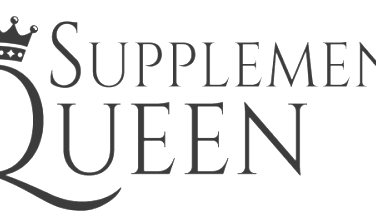If you’re still making your way through “hockey rookie road”, learning the rules that make “hockey” hockey is paramount.
Yes, every sport has a particular set of directives, and it’s so much a part of the way the game is played that even some fans know it by heart.
You might be aware of some of hockey’s basic rules, but it is especially important to learn the most critical ones to play the game right.
Let’s walk you through some of ice hockey’s most important rules, so you don’t enter the rink clueless and might actually have a good chance of holding your own against more experienced players.
At icegators.com, you might also find some information that can aid in your beginner’s journey.
Hockey’s Six Most Important Rules
Those looking to get anywhere in hockey should remember the following rules at all times:
1. Offsides
There are two blue lines in a hockey rink on either end identified as “the zone”. The areas inside these blue lines are called the defensive and offensive zones, and the middle area is called the neutral zone.
Offsides dictate that offensive players should only enter the zone once the puck does. This rule is set in place to prevent players from cherry-picking the moments they guard the opponent’s goal. It also means no member of the offensive team should be skating inside the offensive zone if the puck isn’t there.
2. Penalties
Let’s face it: some players are more crucial to victory than others. So when someone who’s vital to increasing the team’s winning chances ends up in the penalty box, you can only imagine what this does to everyone.
It could potentially mess up winning strategies and leave the team to rely on back-up plans that may or may not work. One thing’s for sure; this is not a position the coach or any of the players want to be in.
That said, the penalty box is exactly where you’re going if you commit either a minor or major penalty. A minor penalty entails two minutes out of the game and a power play for the other team. If within those two minutes the opposing team scores, the penalty gets lifted. Some penalties considered “minor” include roughing, interference, tripping, and slashing.
As for a major penalty, that happens when a referee deems a play to have the intent to injure. That gets the player at fault five minutes in the box—five crucial minutes of absence that could significantly reduce their team’s winning chances. Unlike minor penalties, major penalties require the accused team’s player to wait out the entire five minutes in the box, even when they are scored on during a power play.
3. Power Plays
We’ve been mentioning this quite often, so it’s only fair that it gets its turn. Power plays happen when a team commits a penalty. You’re either on the team holding the power play (if a penalty has been committed against you) or a team looking for a penalty kill (if you were accused of a penalty).
So, basically, if you’re down one player, your team will be on the penalty kill. However, if your team remains as is, then you’re on the power play. How long your team remains on the power play or penalty kill status will depend on the penalty committed.
4. Faceoffs
Faceoffs take place when play is stopped, and a decision has to be made on which team gets possession of the puck. The five dots around the ice rink (one in the center and two in each zone) factor into this rule.
One player from each team will line up on either side of a dot and then battle for possession of the puck once the referee drops it on the dot. Whoever gets the puck wins the faceoff.
Faceoffs are critical because they can give teams an early advantage. When you’re able to start with the puck, you get a higher chance to score goals. In the professional hockey scene, some players train to be faceoff specialists, which tells you how crucial faceoffs are to developing a winning strategy.
5. Game Structure
Of course, we can’t forget the rules that govern game structure. To start off, hockey is a game that lasts for three periods. The length of these periods varies, depending on the hockey level you’re engaging in. In the NHL, an entire game lasts an hour, which means each period lasts 20 minutes.
If, after three periods, the scoreline ends up dead even, the game goes to overtime. Overtime lasts five minutes and could award victory to the three-person team that scores first. If the teams are still tied after overtime, a shootout will take place to decide the winner. It is when each team goes head to head with the opposing team’s goalie in an attempt to score more goals in three tries.
6. Icing
You can’t play ice hockey and not be familiar with icing. The rule is set in place so that a team cannot dump the puck from beyond the red line into the opposition’s side of the ice. As a result, teams cannot build a strategy around flinging the puck into the opponent’s zone in order to buy themselves time.
However, icing does not apply when the puck is flung into the opposing team’s zone from beyond the red line, and a member of your team gets to it first. Icing is also waived off for a team on the penalty kill due to instances that might allow them to slow things down in time for their member to rejoin the game.
Rules Ensure Fair Play and Enjoyment
Rules in hockey and any other sport are set in place to put players on a level playing field. Not only does it ensure unfair acts don’t go unpunished. It also rewards handsomely those who play fairly. If you’re looking to make a name for yourself in hockey, whether in the junior or professional league or just among your group of friends, the first step should always be to take the rules to heart.







